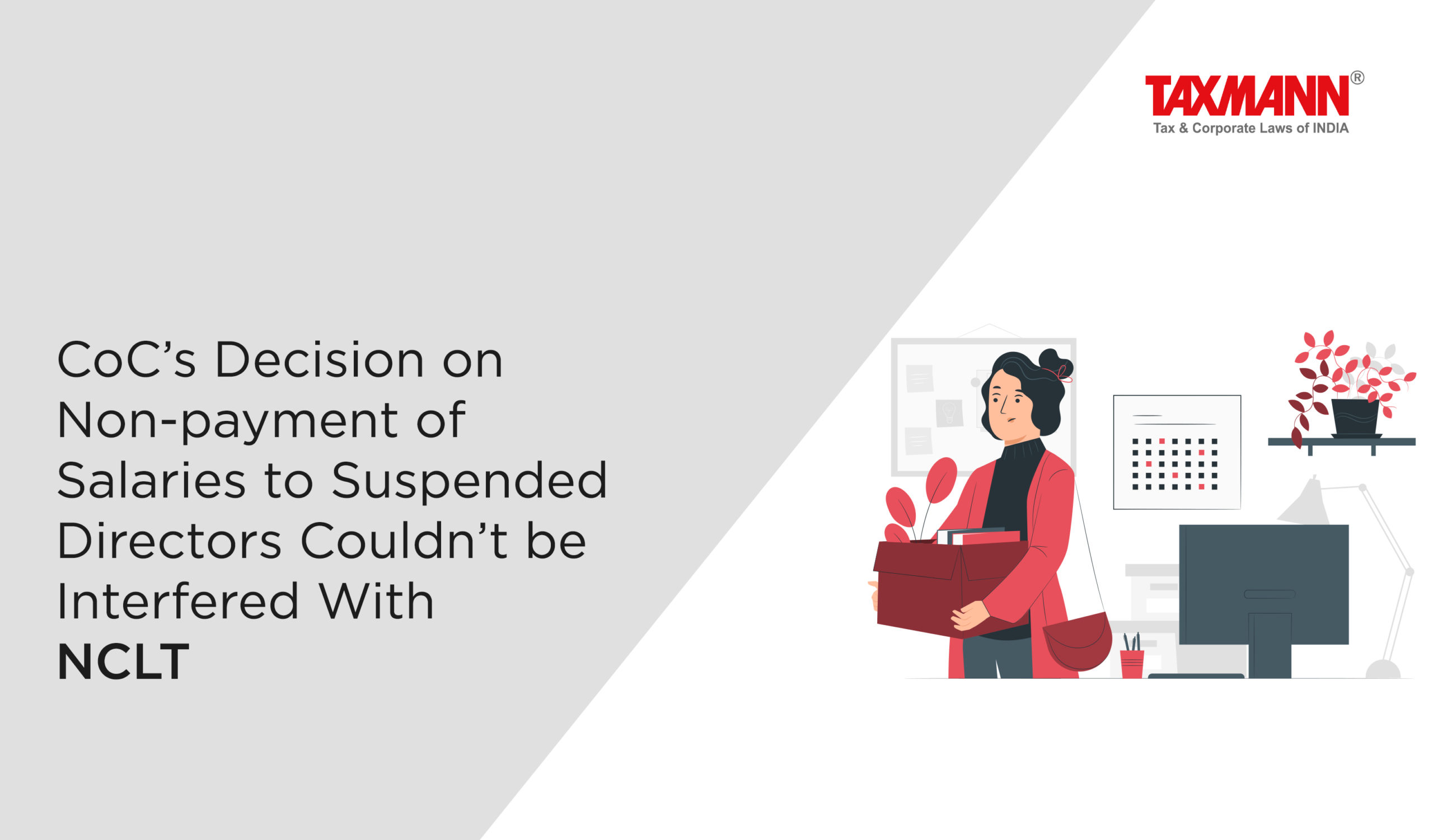CoC’s Decision on Non-payment of Salaries to Suspended Directors Couldn’t be Interfered With | NCLT
- Blog|News|Insolvency and Bankruptcy Code|
- 2 Min Read
- By Taxmann
- |
- Last Updated on 25 July, 2023

Case Details: Babubhai Shrimali v. Committee of Creditors - [2023] 152 taxmann.com 199 (NCLT-Ahd.)
Judiciary and Counsel Details
-
- Dr Deepti Mukesh, Judicial Member & Ajai Das Mehrotra, Technical Member
- Ms Prachiti Shah, Adv. for the Applicant.
- Rahul Sarda & Prafful Goyal, Advs. for the Respondent.
Facts of the Case
In the instant case, the financial creditor filed a Section 7 application against the corporate debtor initiating the CIRP. After the initiation of the CIRP, the applicants served as directors of the corporate debtor, however, due to non-payment of salaries, they later resigned from their respective posts.
The applicants contended that the Resolution Professional (RP) had asked them to render services and assured them that their salaries during the CIRP would be paid to them. When the salaries were not paid, the applicants filed an instant application under section 60(5) of the IBC against the CoC and RP.
It was noted that the applicants were part of the suspended board of directors of the corporate debtor on the date of initiation of CIRP and even after the initiation of the CIRP they had resigned from the post of directors. Thus, they fell under the category of related party of the corporate debtor, in terms of section 5(24) of the IBC.
The NCLT observed that Section 28 prescribes the acts for which the CoC approval is required to be taken by the IRP/RP. Further, as per section 28, the CoC approval is required to be taken by the RP to undertake any related party transaction and the CoC has the power to undertake or not to undertake related party transactions during the CIRP of the corporate debtor.
NCLT Held
The NCLT held that since the RP in various CoC meetings had placed a resolution for the payment of salary to the applicants, however, the CoC in its commercial decision had rejected the said resolution. Therefore, the decision of the CoC regarding the non-payment of salaries to the applicants could not be interfered with. Accordingly, the applications are disposed of.
List of Cases Reviewed
-
- Vallal RCK v. Siva Industries and Holdings Ltd. [2022] 139 taxmann.com 68/173 SCL 1 (SC) (para 18) followed.
List of Cases Referred to
-
- Vallal RCK v. Siva Industries and Holdings Ltd. [2022] 139 taxmann.com 68/173 SCL 1 (SC) (para 17).
Disclaimer: The content/information published on the website is only for general information of the user and shall not be construed as legal advice. While the Taxmann has exercised reasonable efforts to ensure the veracity of information/content published, Taxmann shall be under no liability in any manner whatsoever for incorrect information, if any.

Taxmann Publications has a dedicated in-house Research & Editorial Team. This team consists of a team of Chartered Accountants, Company Secretaries, and Lawyers. This team works under the guidance and supervision of editor-in-chief Mr Rakesh Bhargava.
The Research and Editorial Team is responsible for developing reliable and accurate content for the readers. The team follows the six-sigma approach to achieve the benchmark of zero error in its publications and research platforms. The team ensures that the following publication guidelines are thoroughly followed while developing the content:
- The statutory material is obtained only from the authorized and reliable sources
- All the latest developments in the judicial and legislative fields are covered
- Prepare the analytical write-ups on current, controversial, and important issues to help the readers to understand the concept and its implications
- Every content published by Taxmann is complete, accurate and lucid
- All evidence-based statements are supported with proper reference to Section, Circular No., Notification No. or citations
- The golden rules of grammar, style and consistency are thoroughly followed
- Font and size that’s easy to read and remain consistent across all imprint and digital publications are applied





